I am drawn to “low” building materials; concrete block, corrugated metal and yes, plywood. The history of plywood according the American Plywood Association (APA):
“Archeologists have found traces of laminated wood in the tombs of the Egyptian pharaohs. A thousand years ago, the Chinese shaved wood and glued it together for use in furniture. The English and French are reported to have worked wood on the general principle of plywood in the 17th and 18th centuries. And historians credit Czarist Russia for having made forms of plywood prior to the 20th century as well. Early modern-era plywood was typically made from decorative hardwoods and most commonly used in the manufacture of household items, such as cabinets, chests, desk tops and doors. Construction plywood made from softwood species did not appear on the scene until the 20th century.
The first patent for what could be called plywood was issued December 26, 1865, to John K. Mayo of New York City. A re-issue of that patent, dated August 18, 1868, described Mayo’s development as follows: “The invention consists in cementing or otherwise fastening together a number of these scales of sheets, with the grain of the successive pieces, or some of them, running crosswise or diversely from that of the others…” Mayo may have had a vision, but apparently not much business sense, since history does not record that he ever capitalized on his patents. In 1905, the city of Portland, Oregon was getting ready to host a World’s Fair as part of the 100th anniversary celebration of the Lewis and Clark Expedition. Several local businesses were asked to prepare exhibits for the event, including Portland Manufacturing Company, a small wooden box factory in the St. Johns district of the city. Part owner and plant manager Gustav Carlson decided to laminate wood panels from a variety of Pacific Northwest softwoods. Using paint brushes as glue spreaders and house jacks as presses, several panels were laid up for display. Called “3-ply veneer work,” the product created considerable interest among fairgoers, including several door, cabinet and trunk manufacturers who then placed orders. By 1907, Portland Manufacturing had installed an automatic glue spreader and a sectional hand press. Production soared to 420 panels a day. And an industry was born.”
From that time and especially after World War II, plywood has evolved into a completely functional product with very little decorative ambition. This is reflected in its general use, which is underneath something else or to cheaply cover up something broken. Maybe that’s why it is so pleasantly surprising when it is used in an artistic way (even inadvertently) or just to enjoy the way the grain takes paint and weathers.
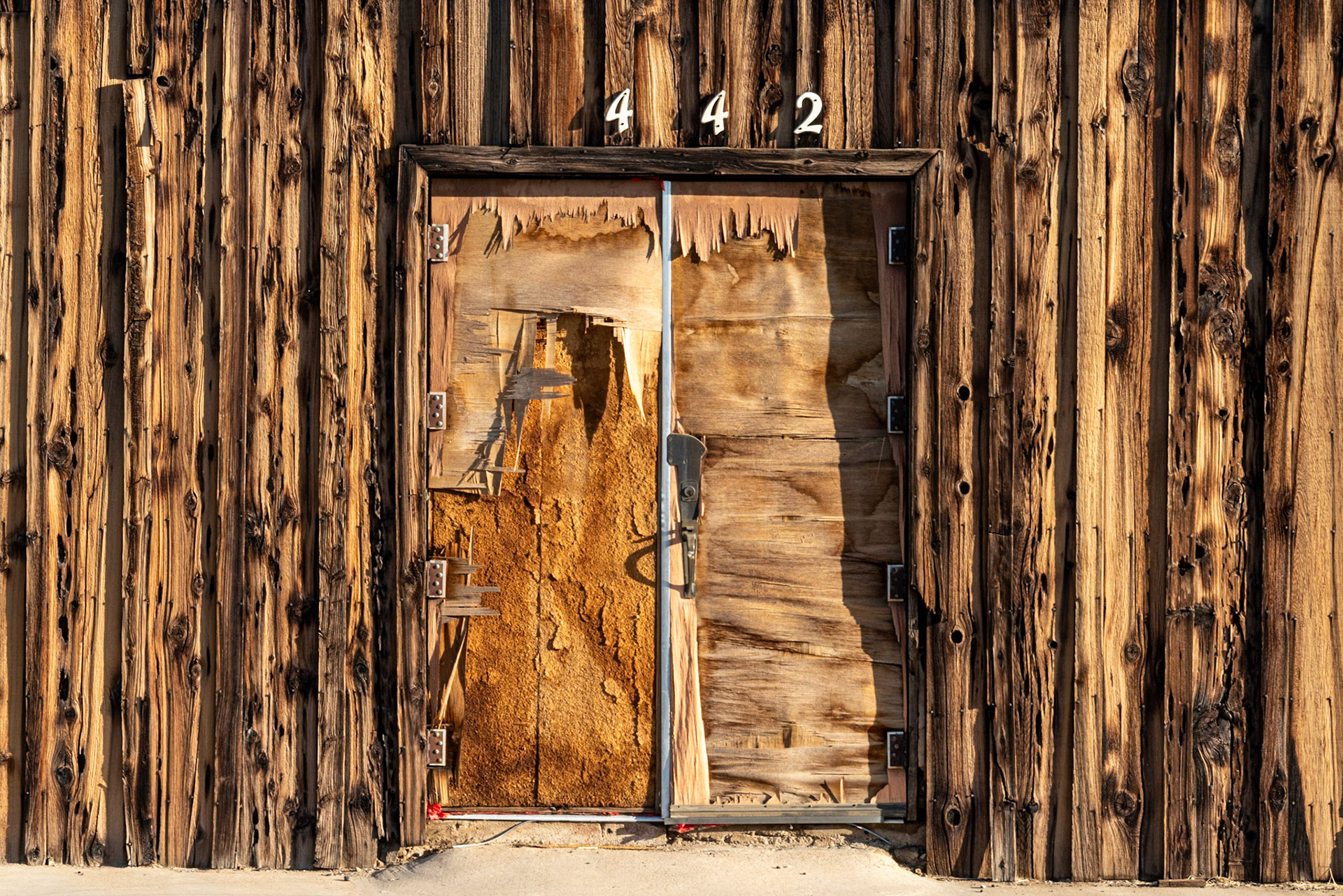
Ridgecrest CA
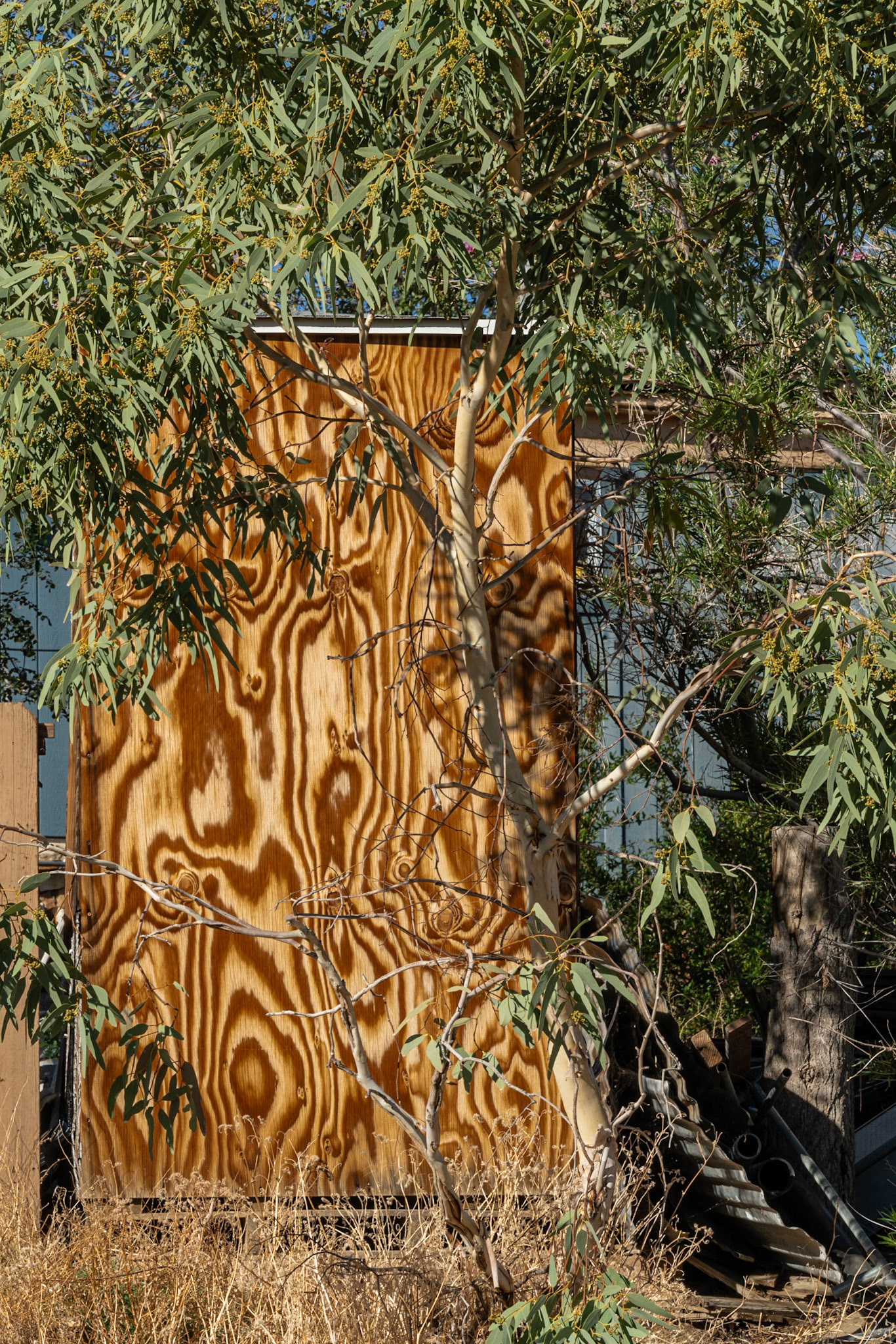
Randsburg CA
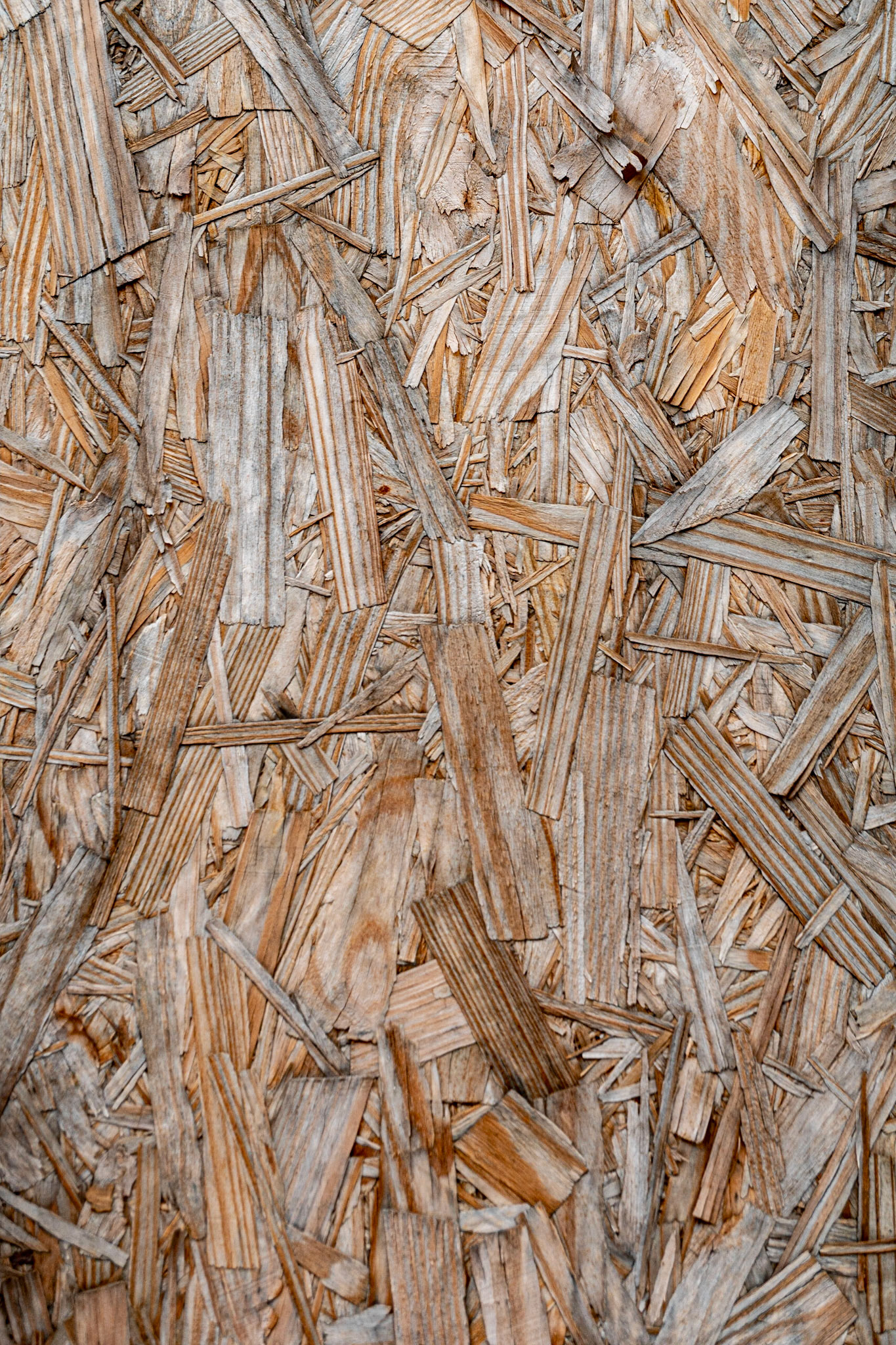
San Pedro
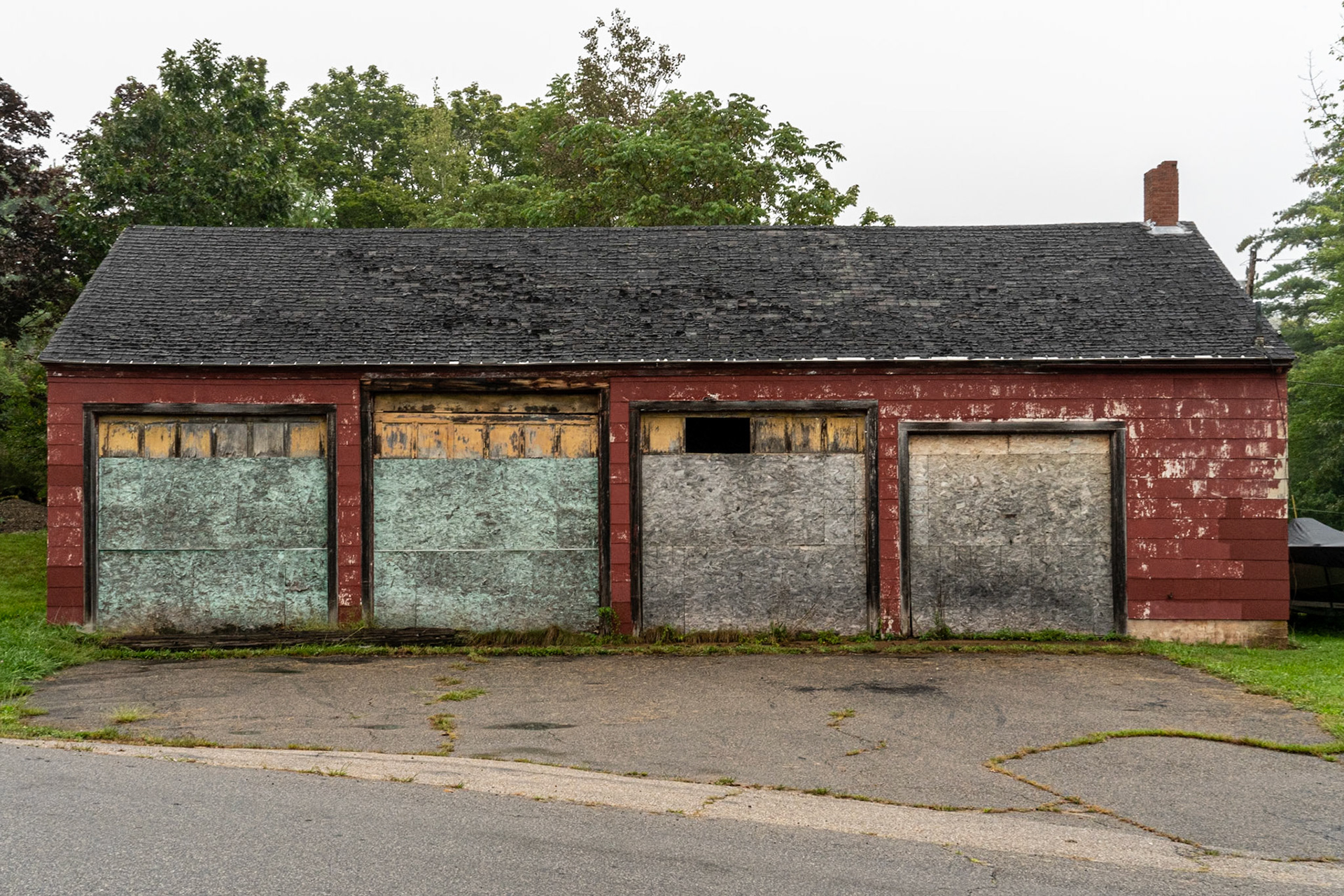
South Berwick Maine
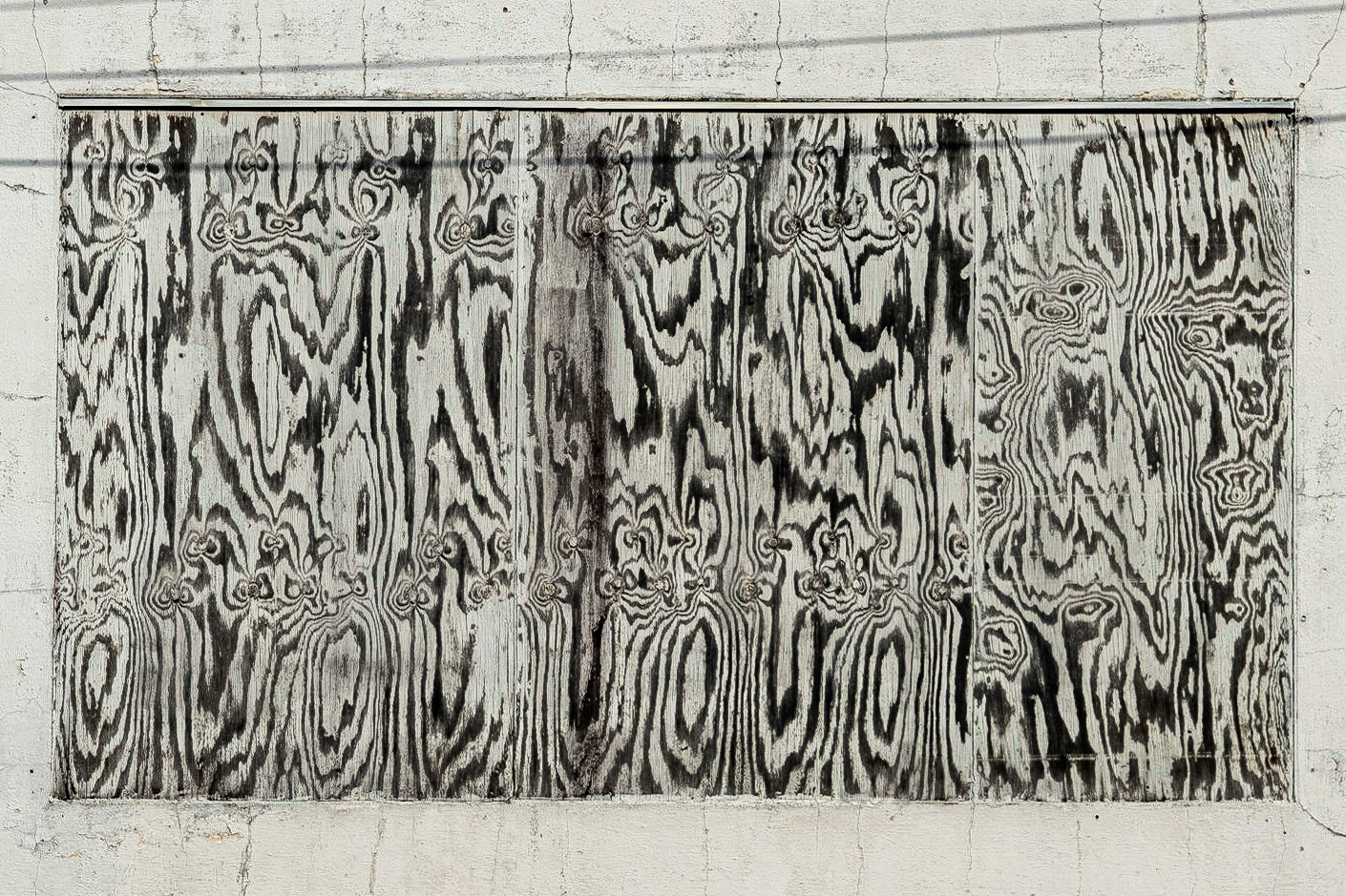
Abbeville LA
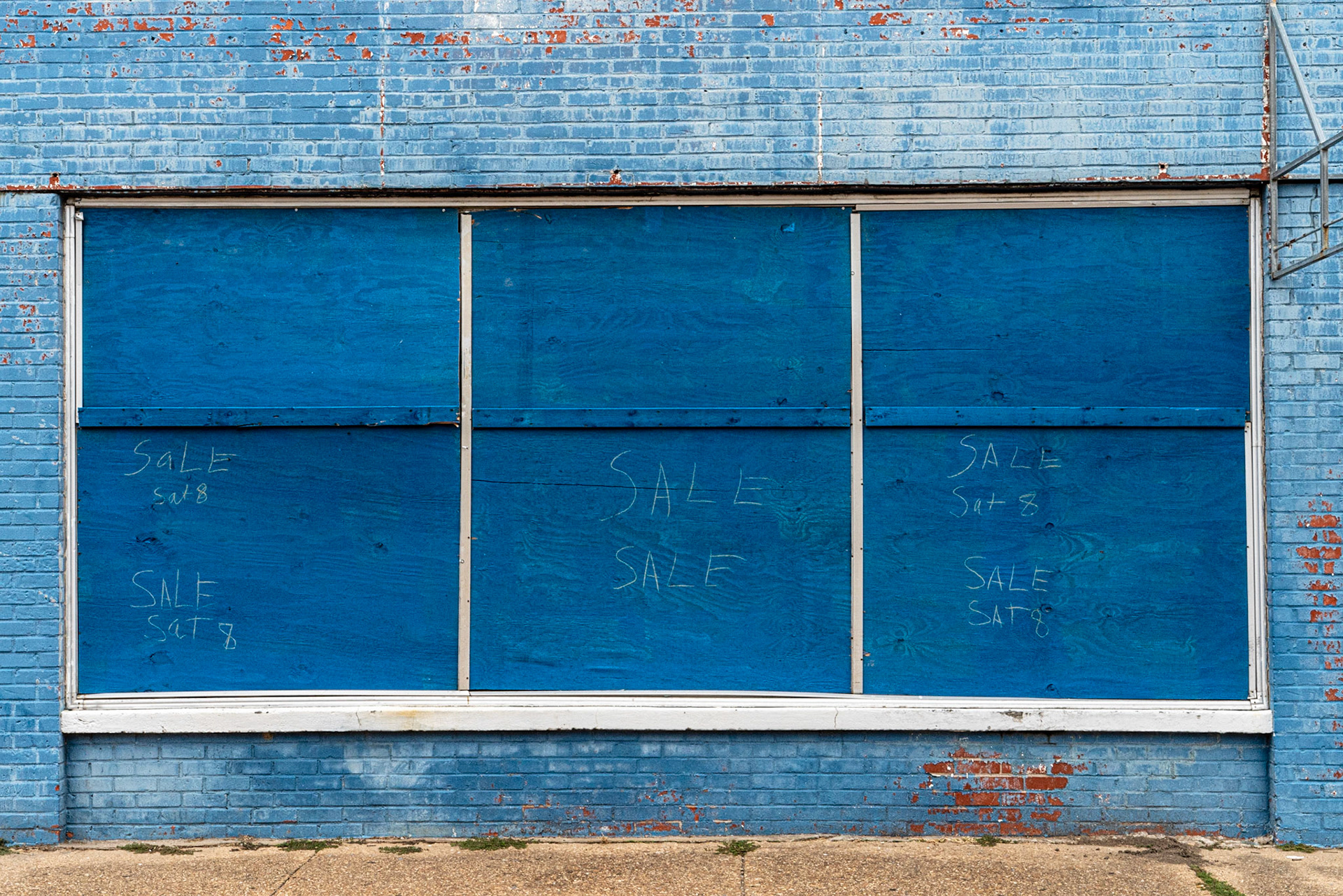
Hollandale MS

Corbin KY

Whitby, Ontario
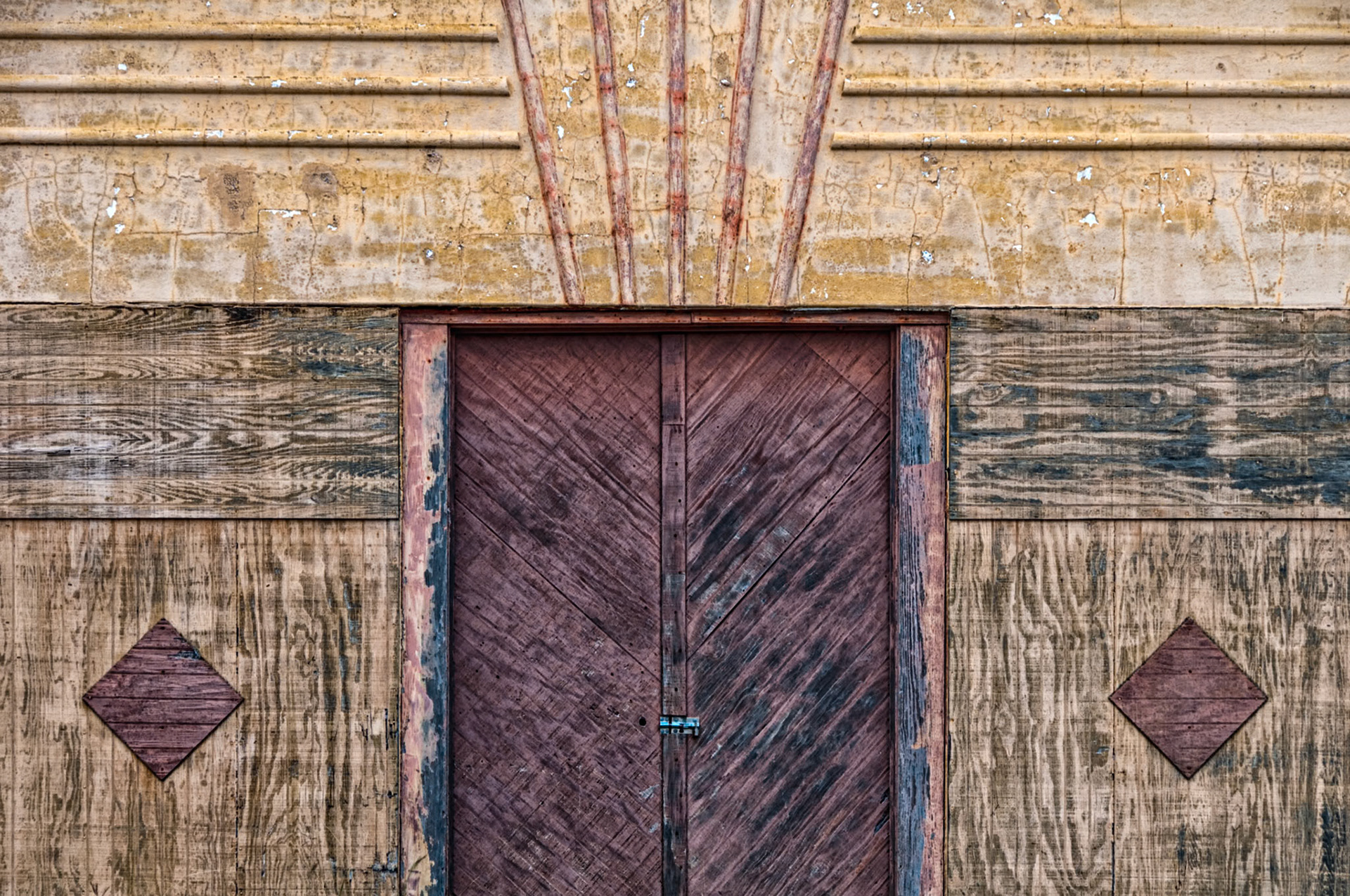
Houston TX
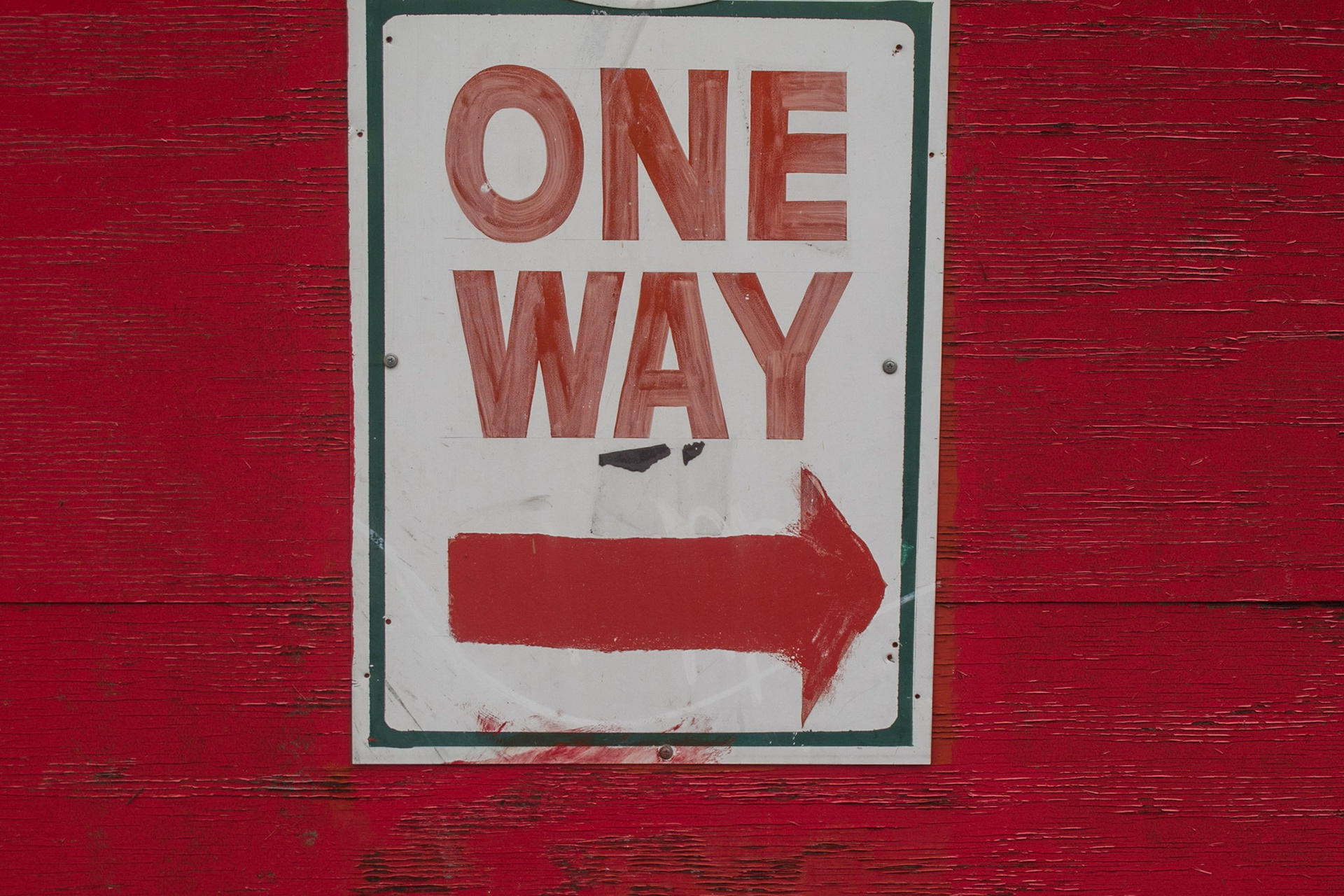
Downtown LA
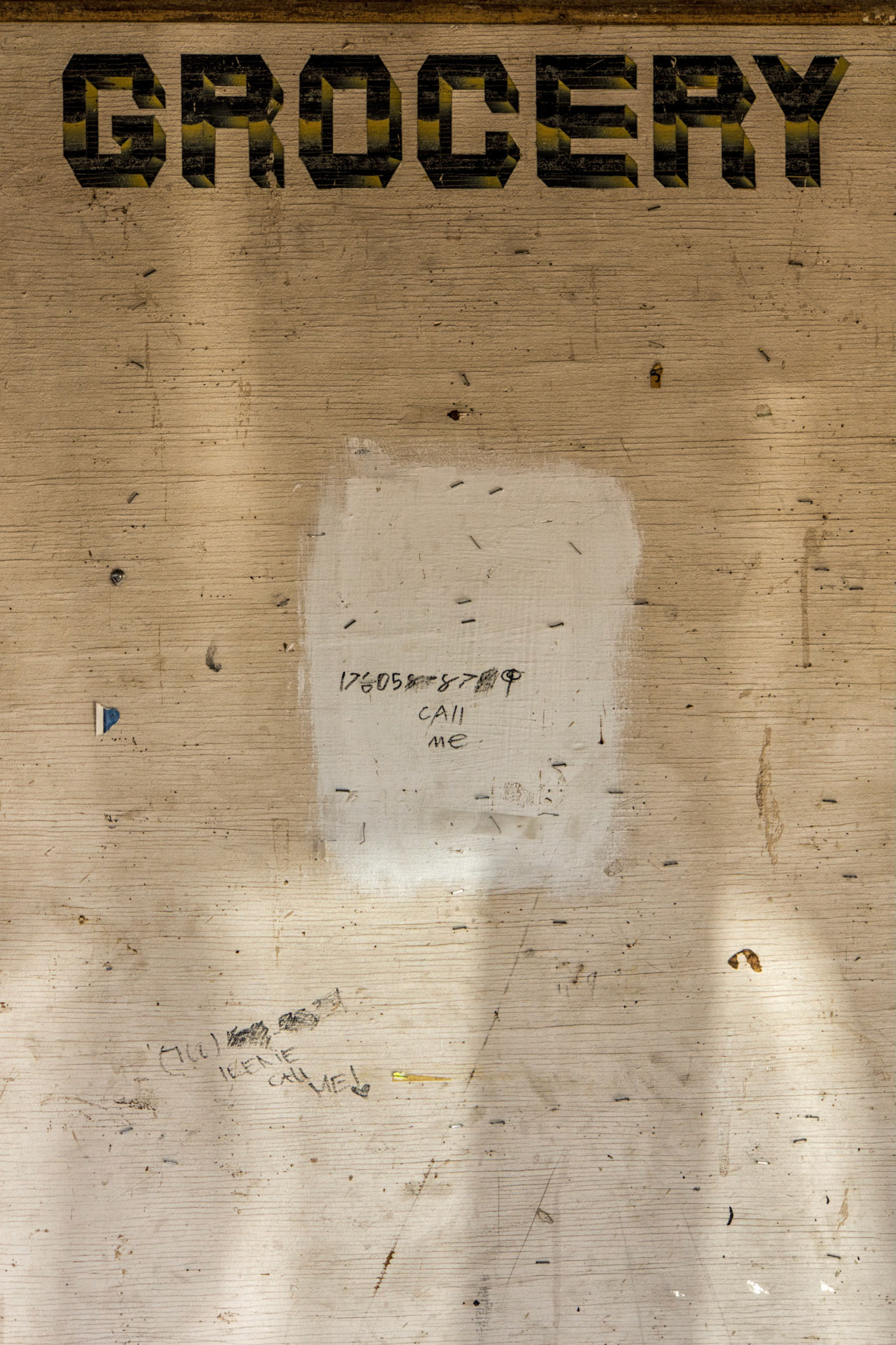
Niland CA

Baton Rouge LA
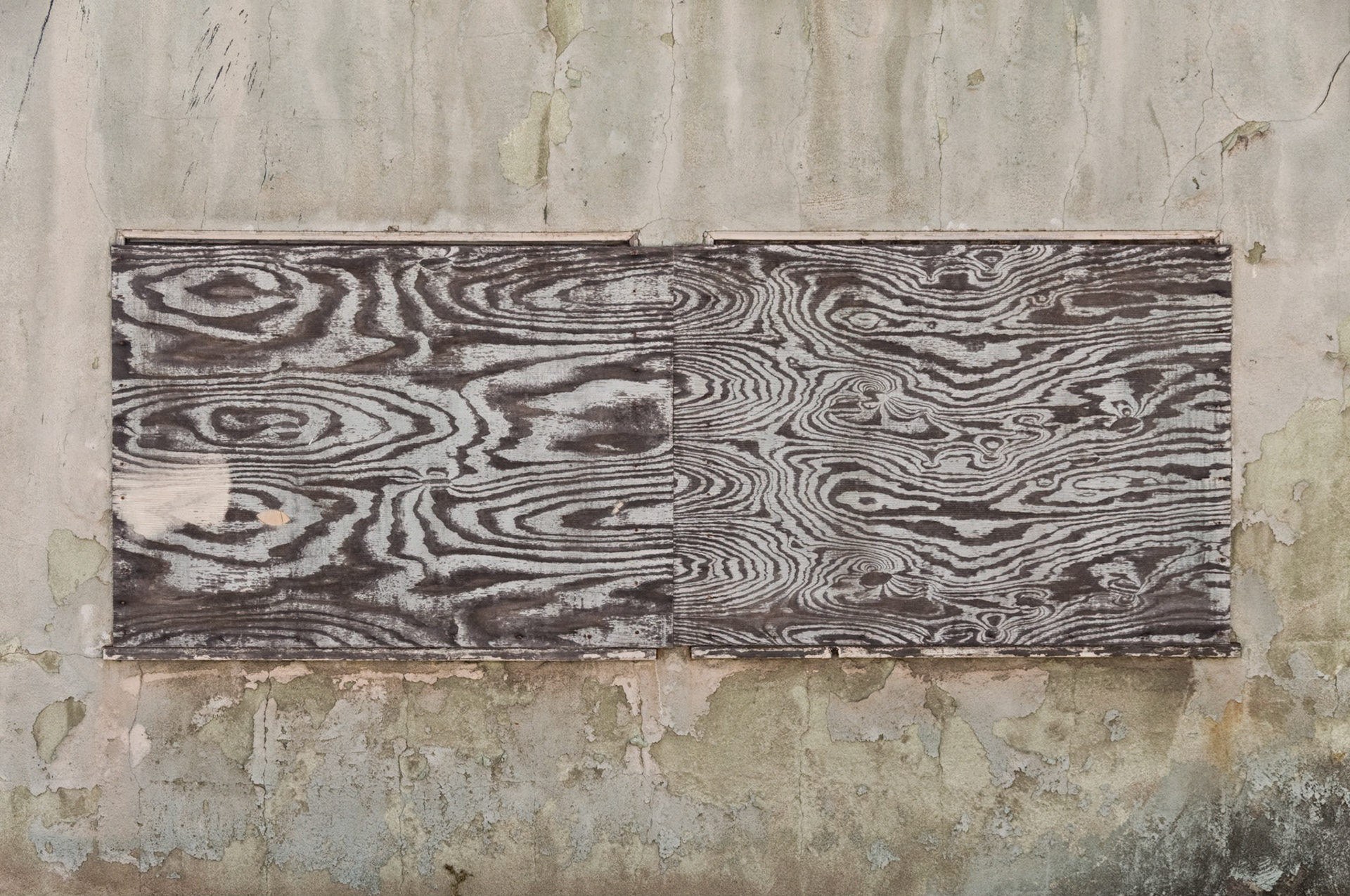
Terminal Island CA
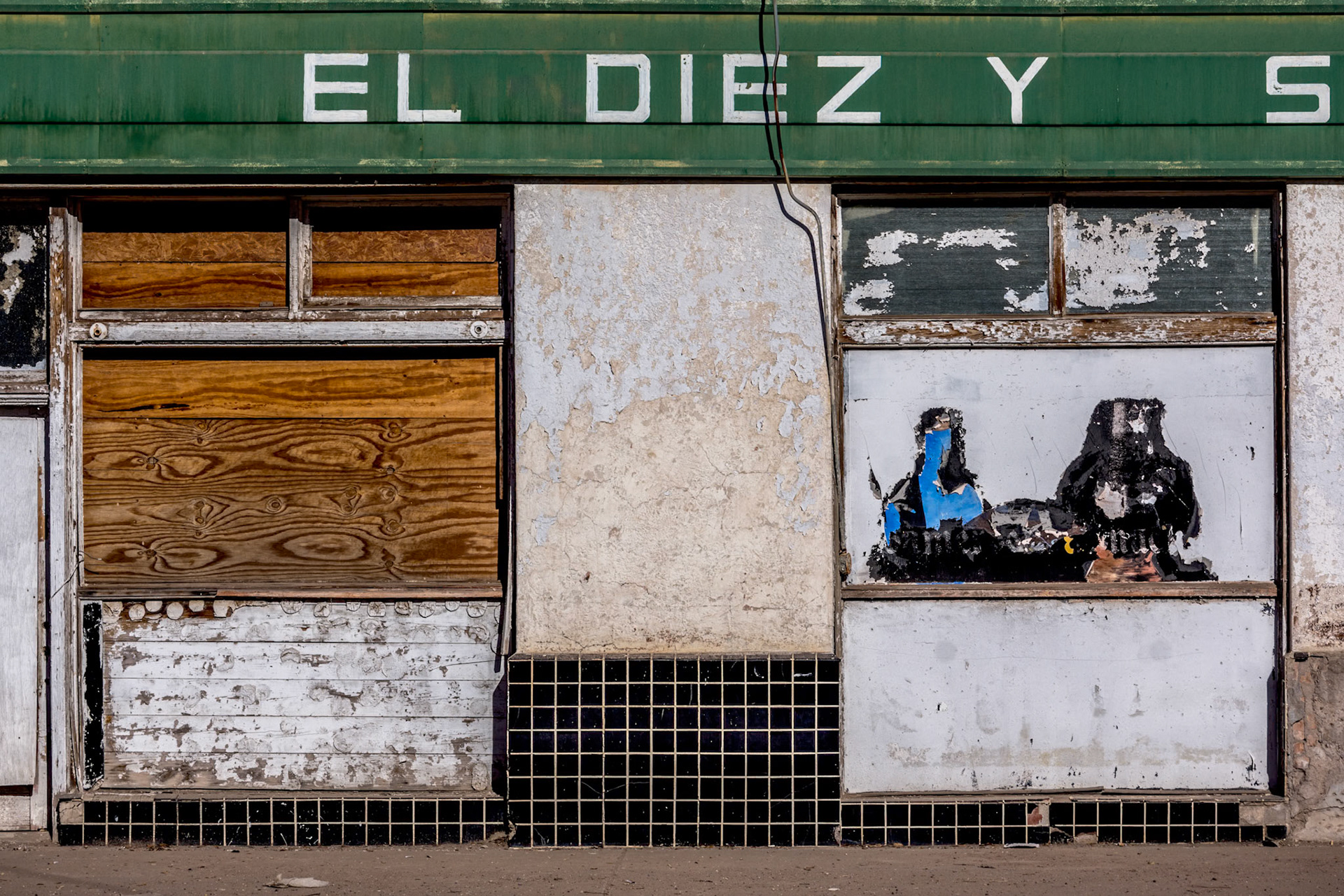
Honey Grove TX
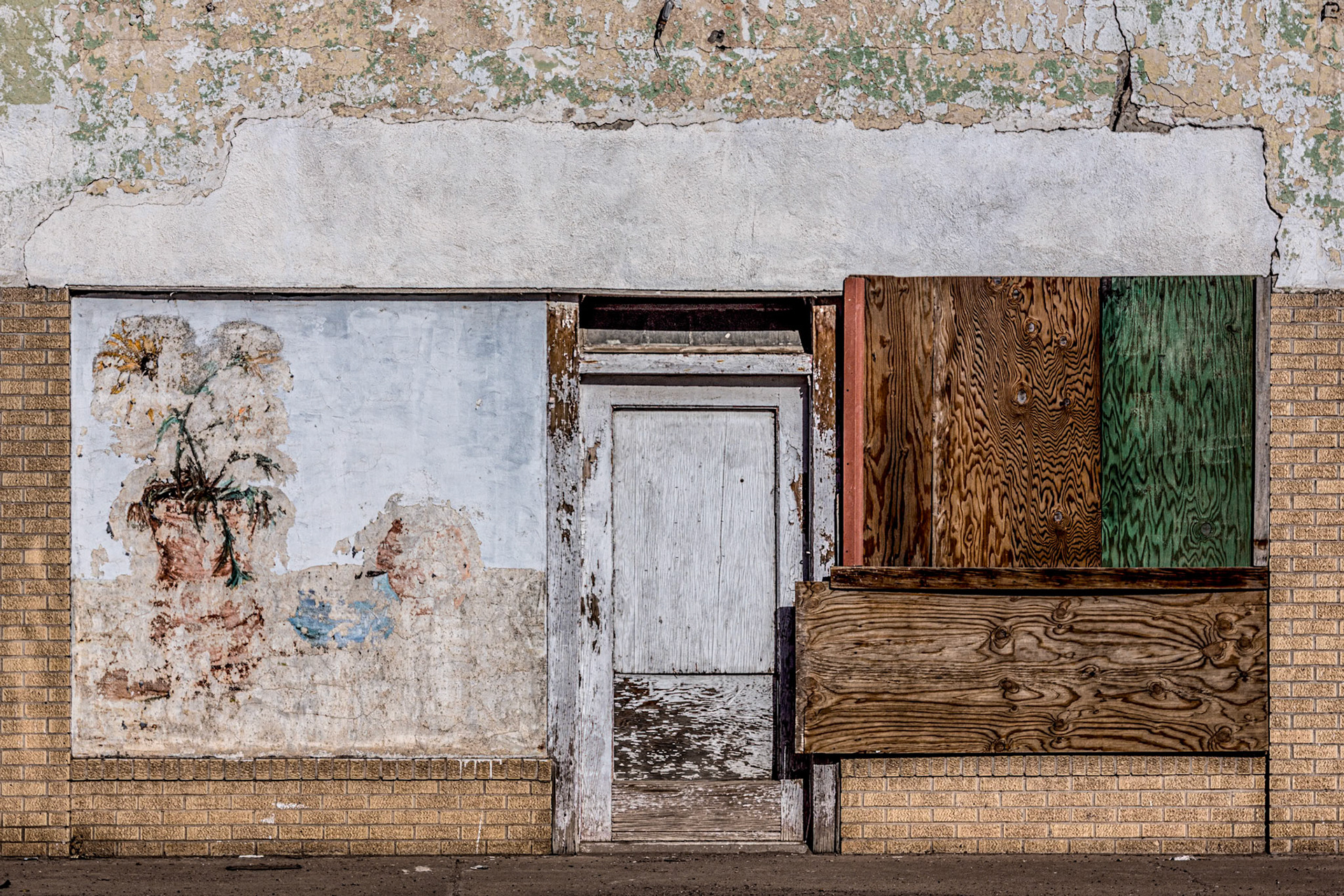
Honey Grove TX

Pochahantas AR

Bear River City UT

Oakesdale WA

Mortmar CA (Salton Sea)

Philadelphia
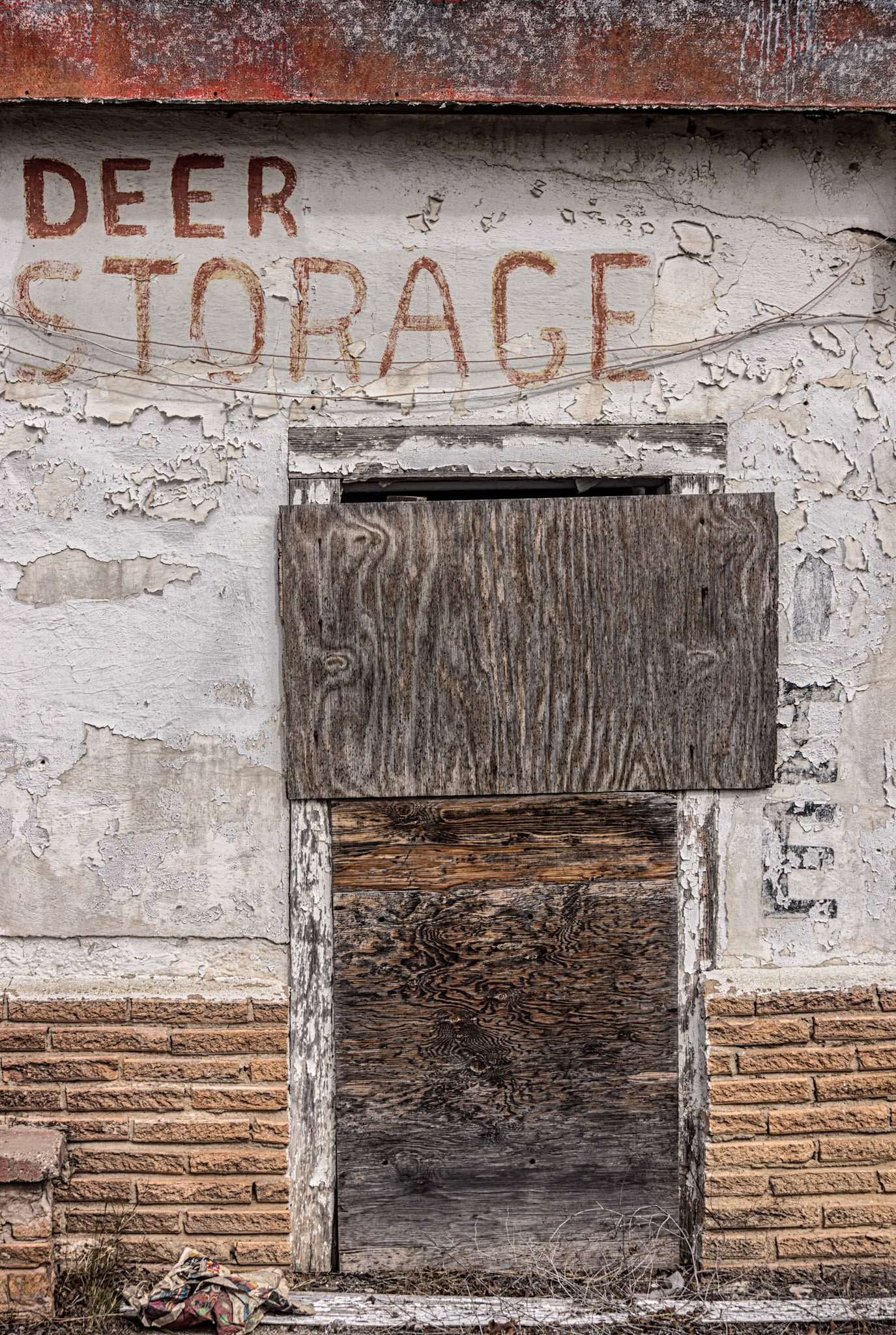
Comstock TX
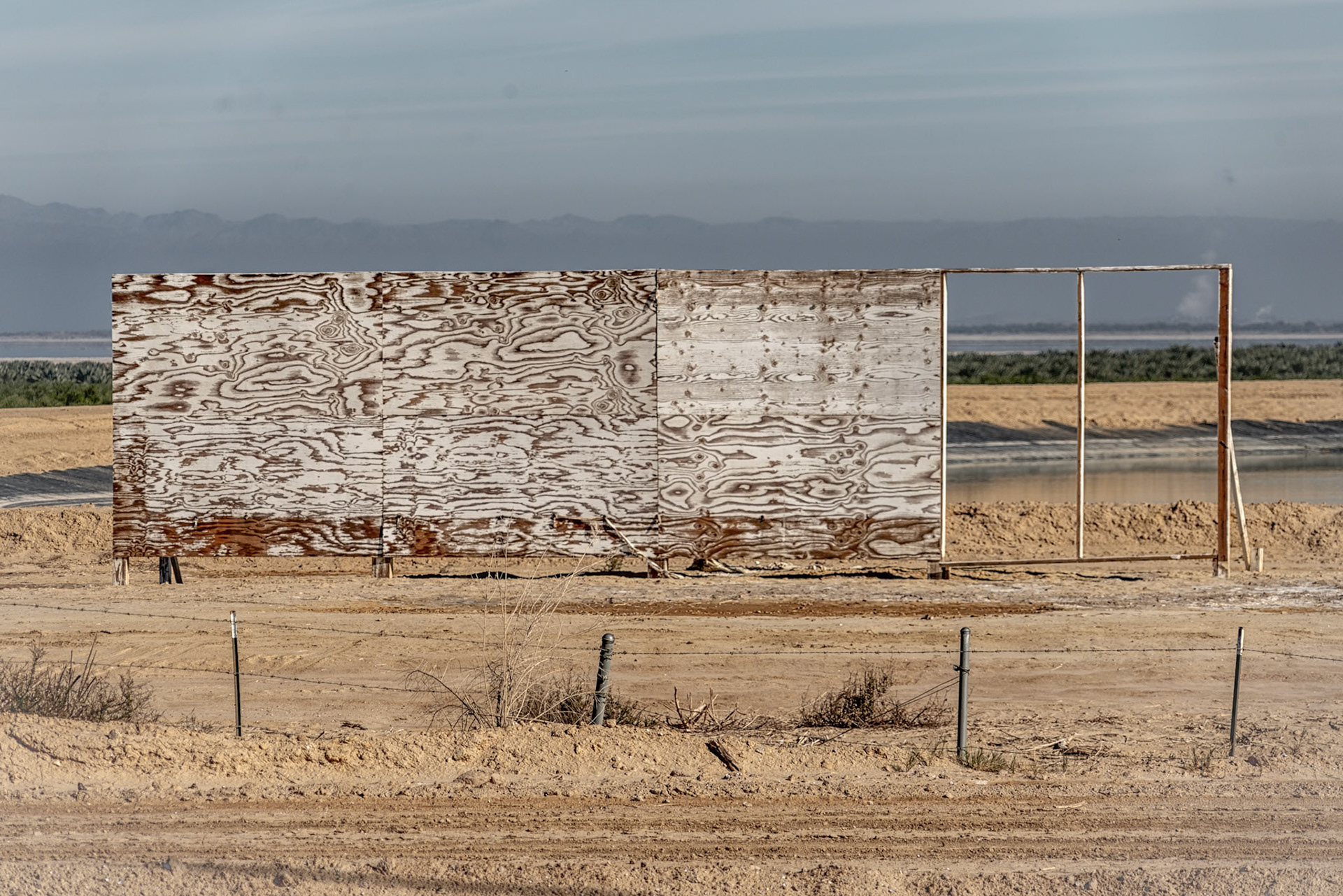
Kane Spring CA
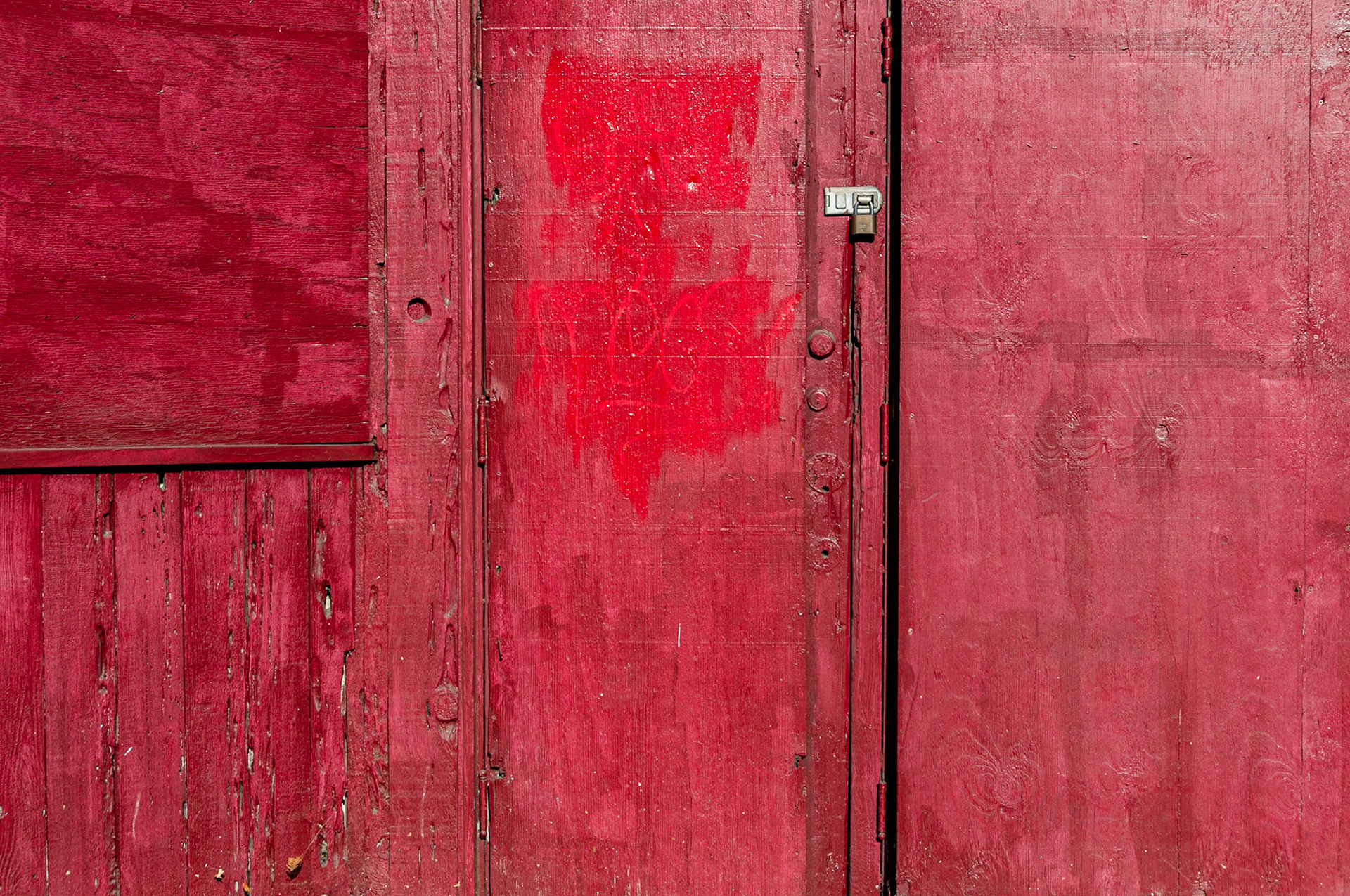
Visalia CA
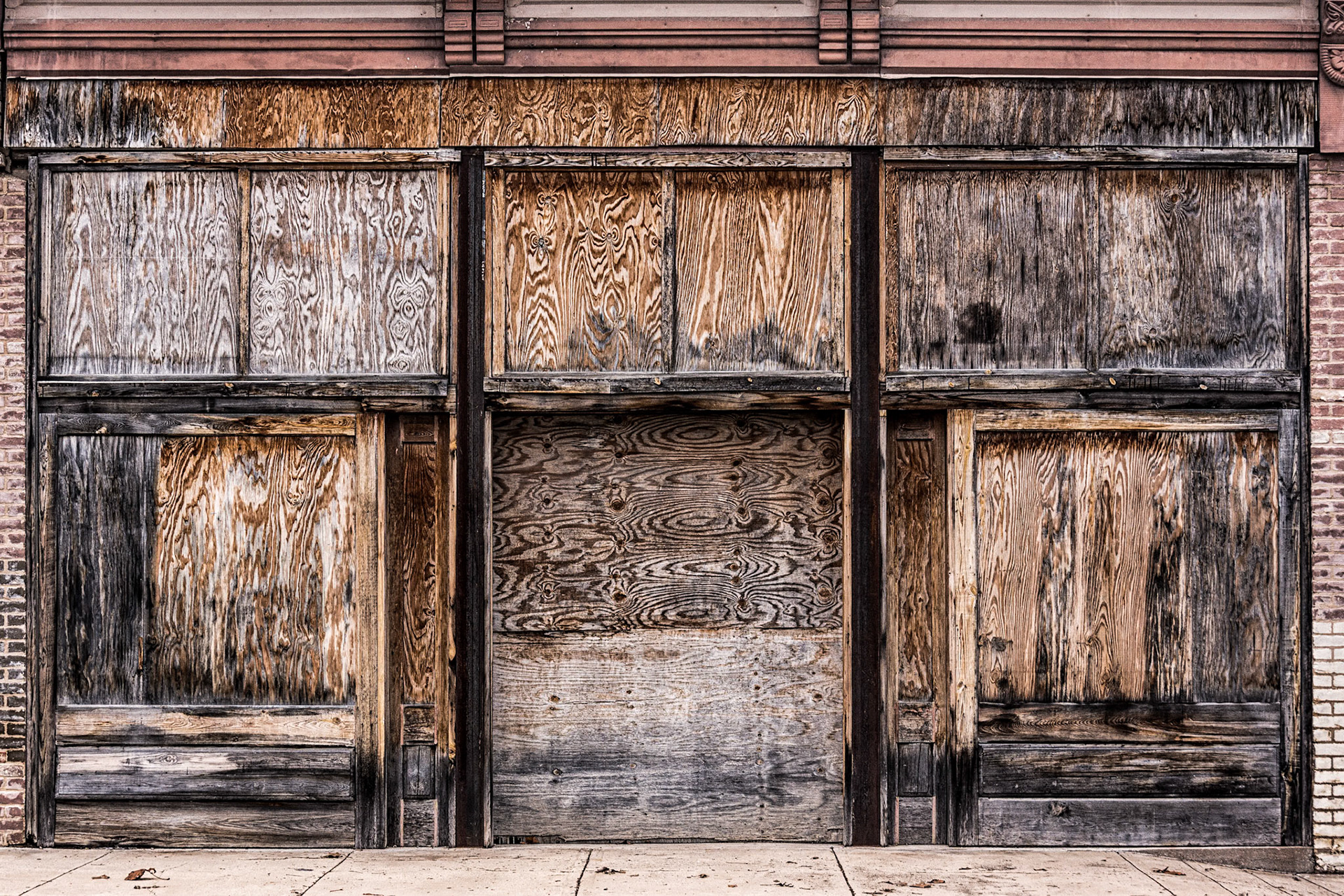
Hico, TX
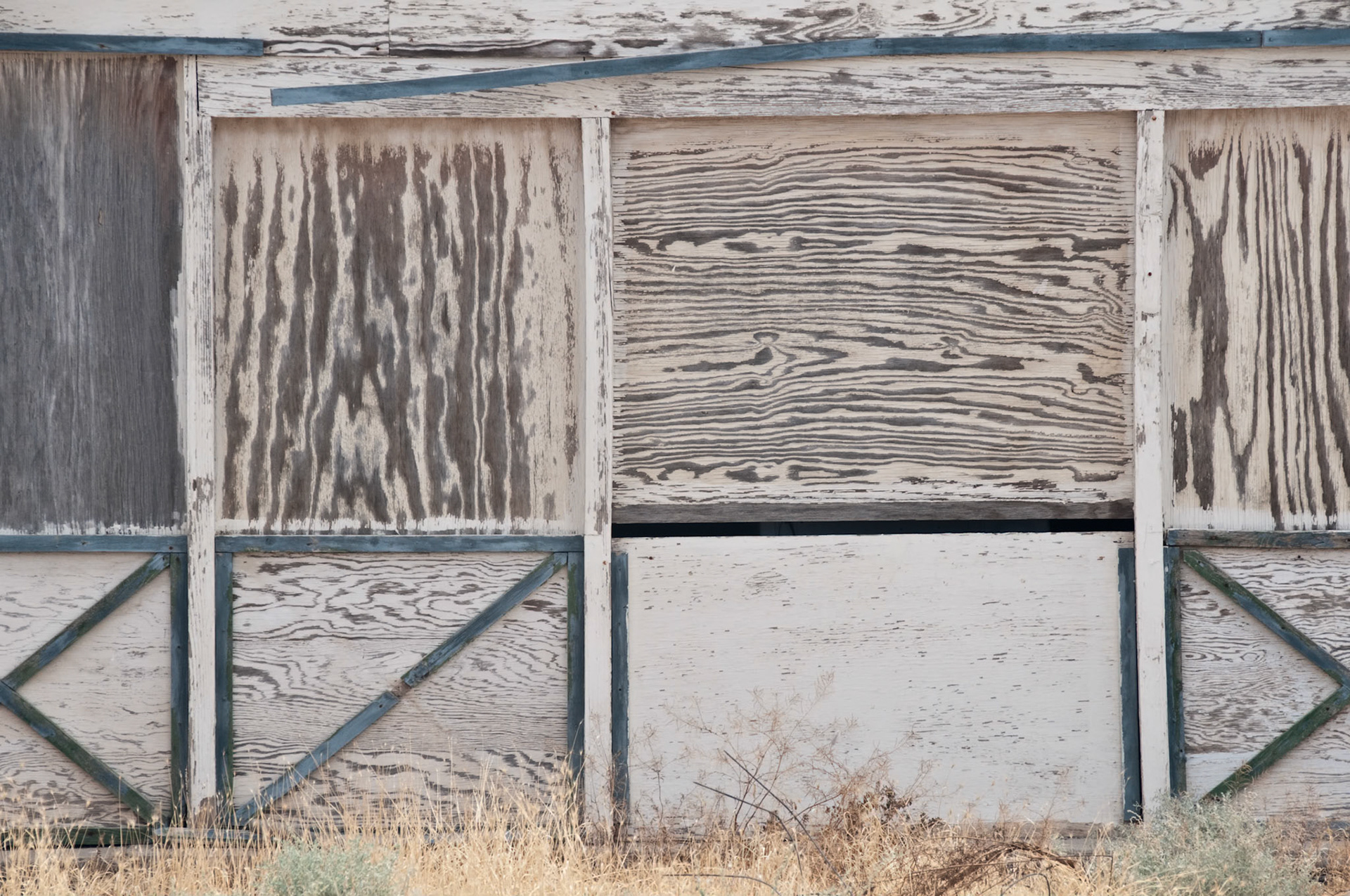
Bombay Beach
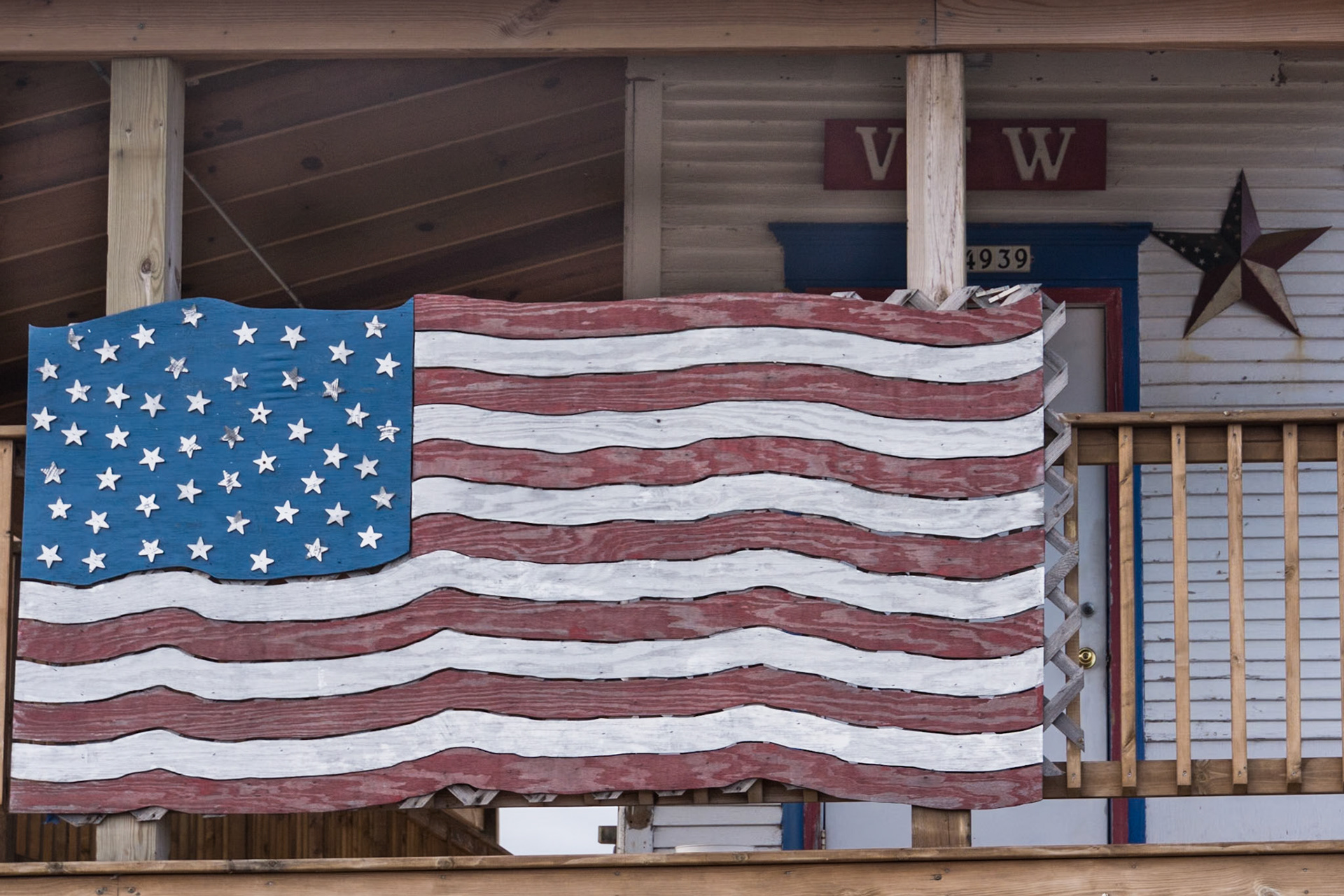
UP Michigan
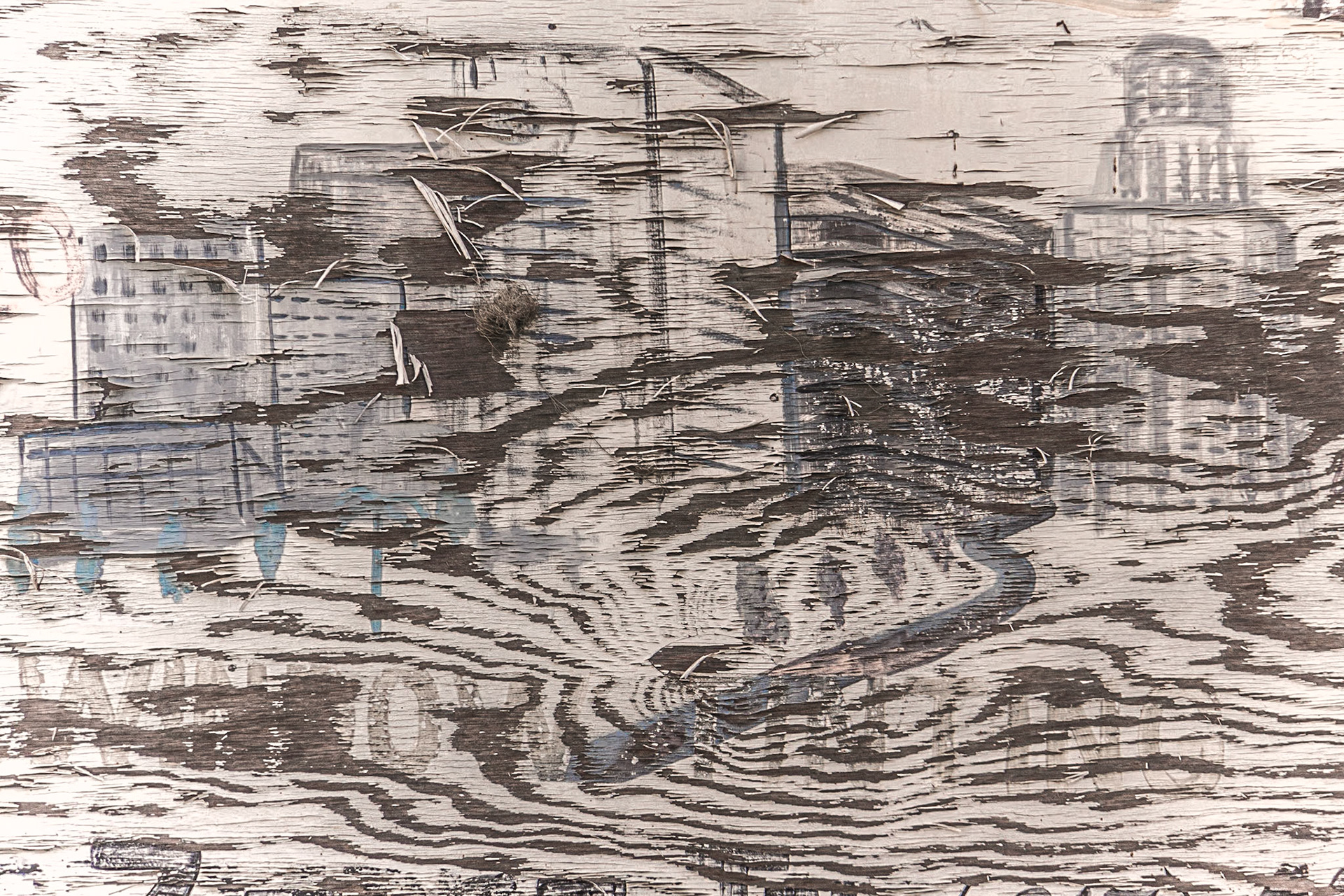
Los Angeles
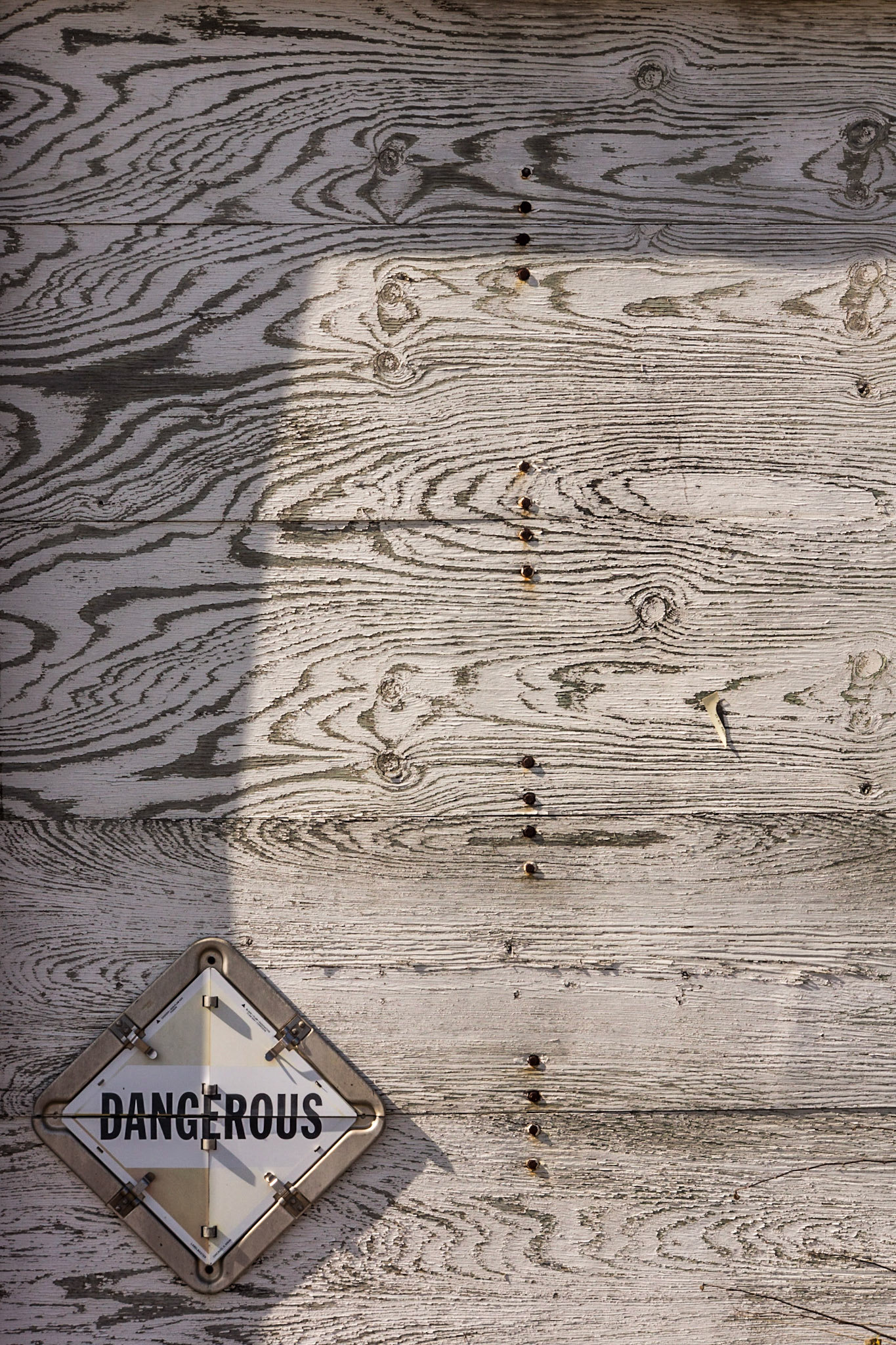
West Texas


Texas

Lancaster CA

Point Pleasant WV

Slab City (Salton Sea) CA
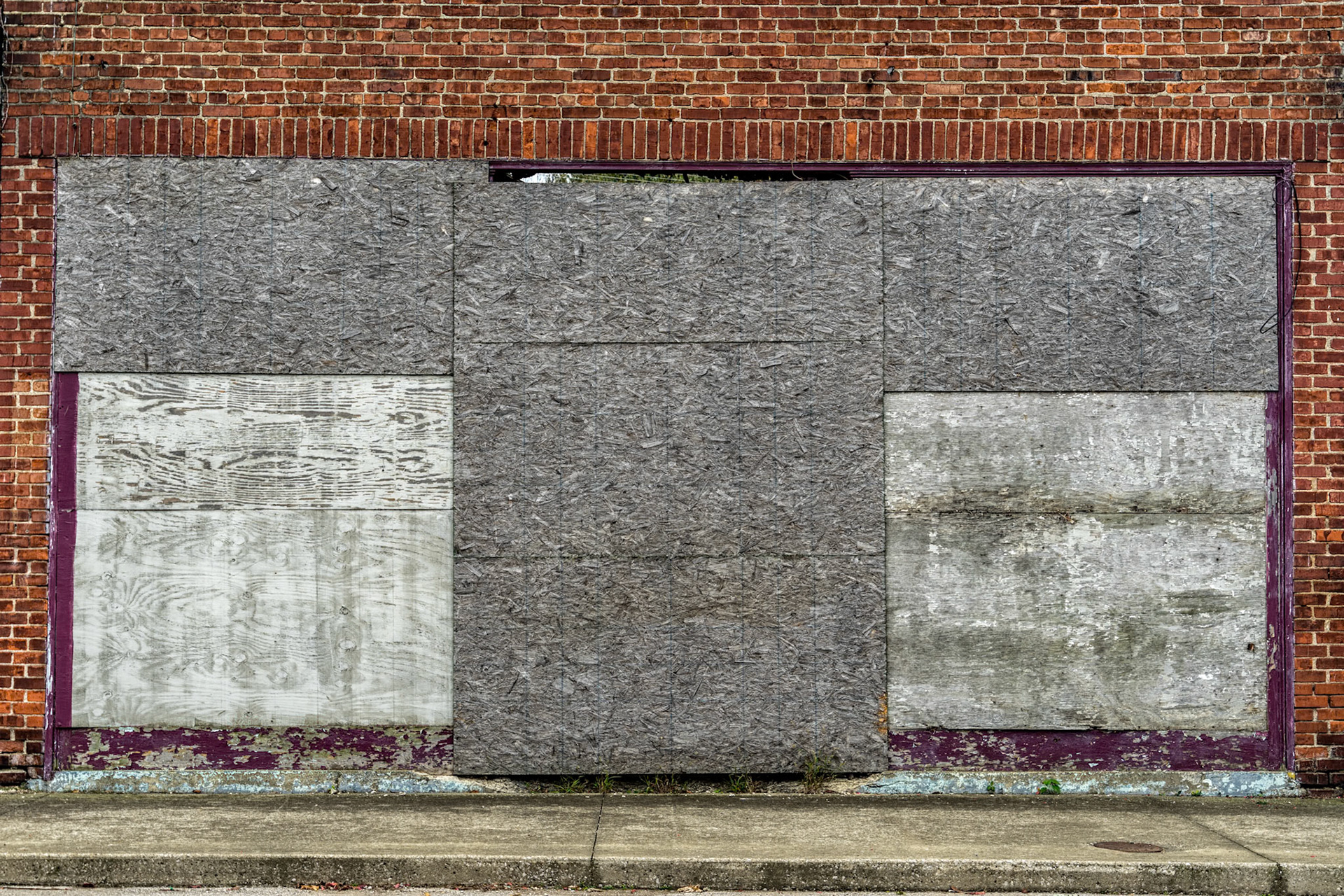
Abbeville LA
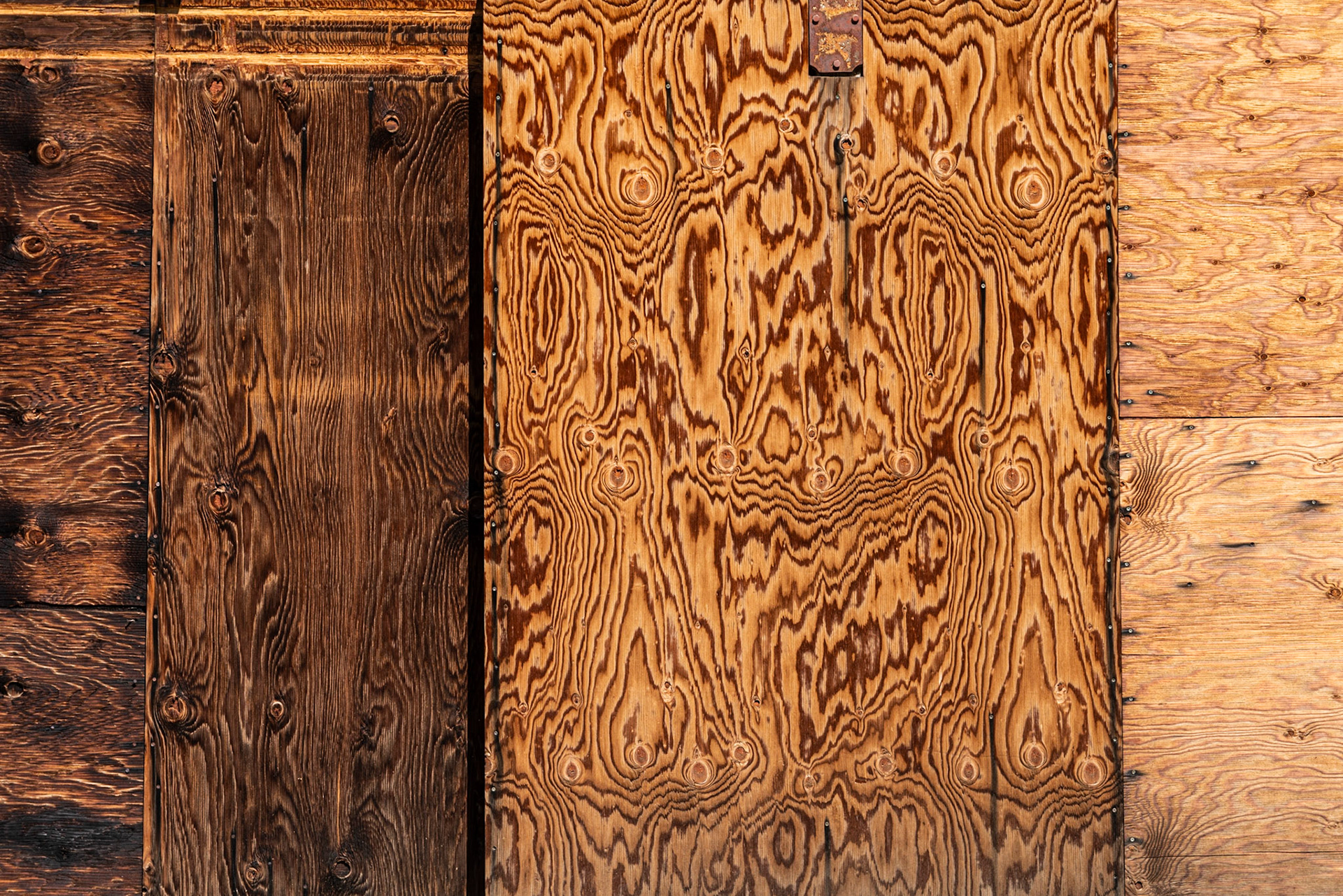
Gibbonsville ID


Diamond Springs CA
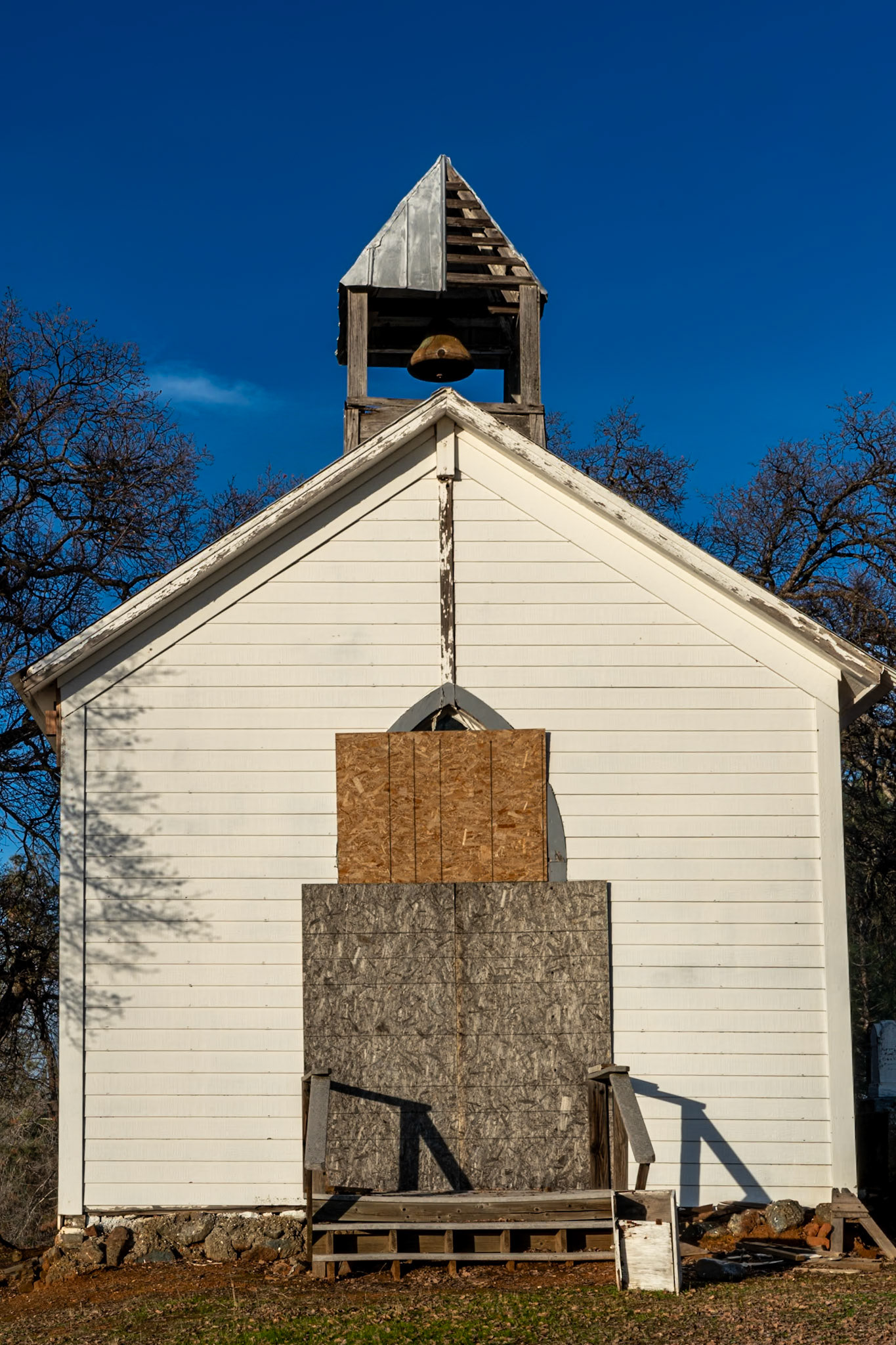
Chinese Camp CA
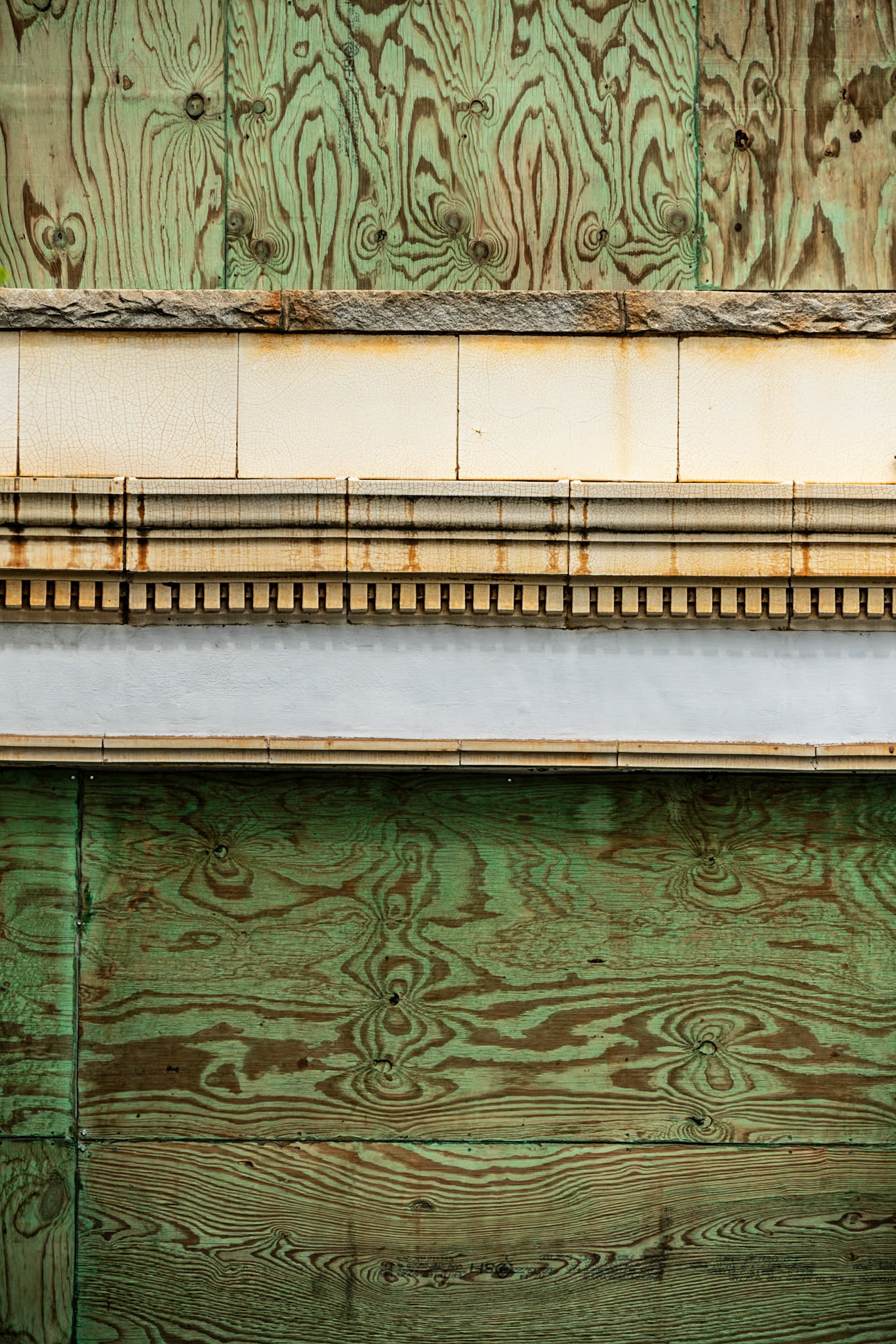

North Hollywood CA

Port Angeles WA
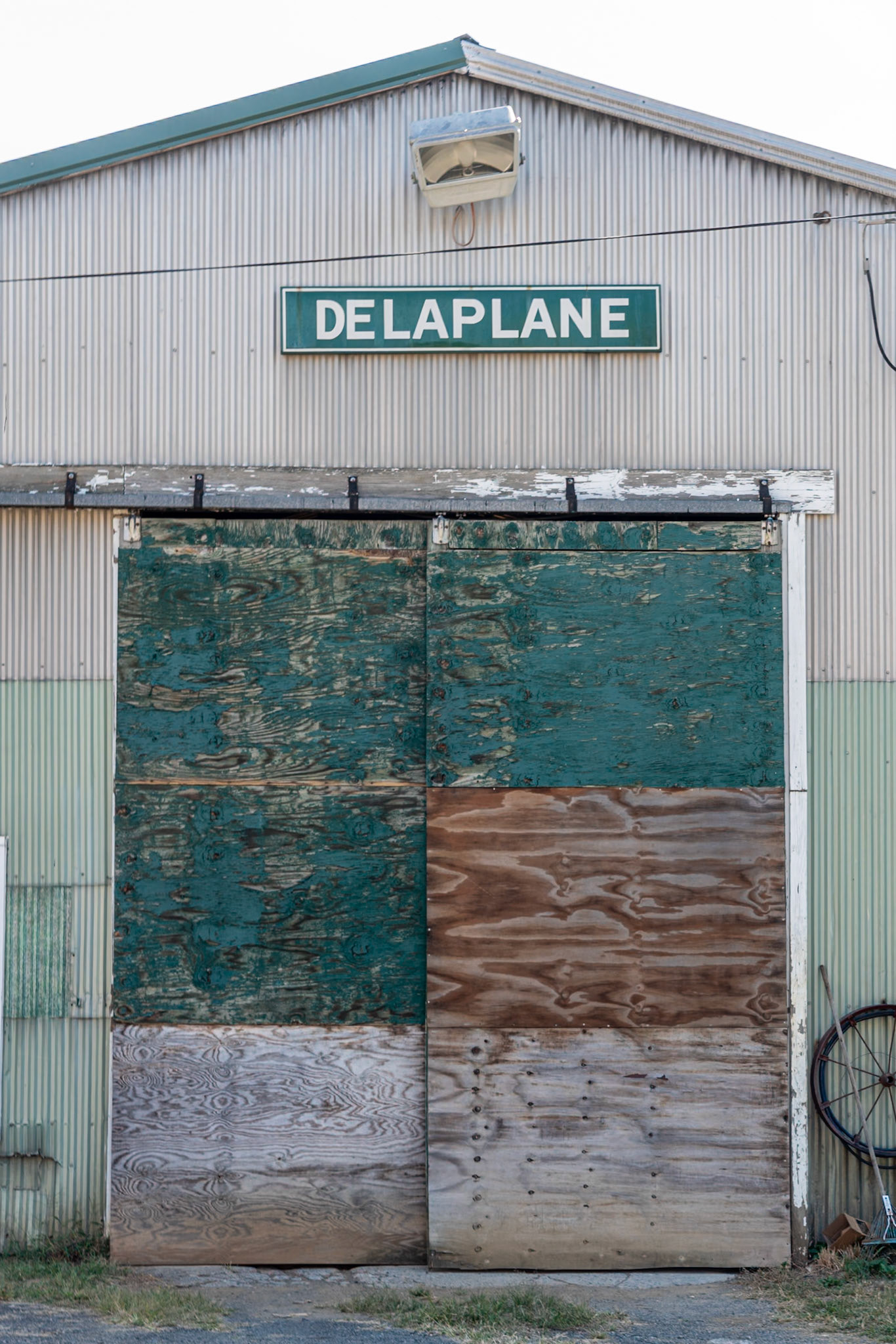
Delaplane VA

